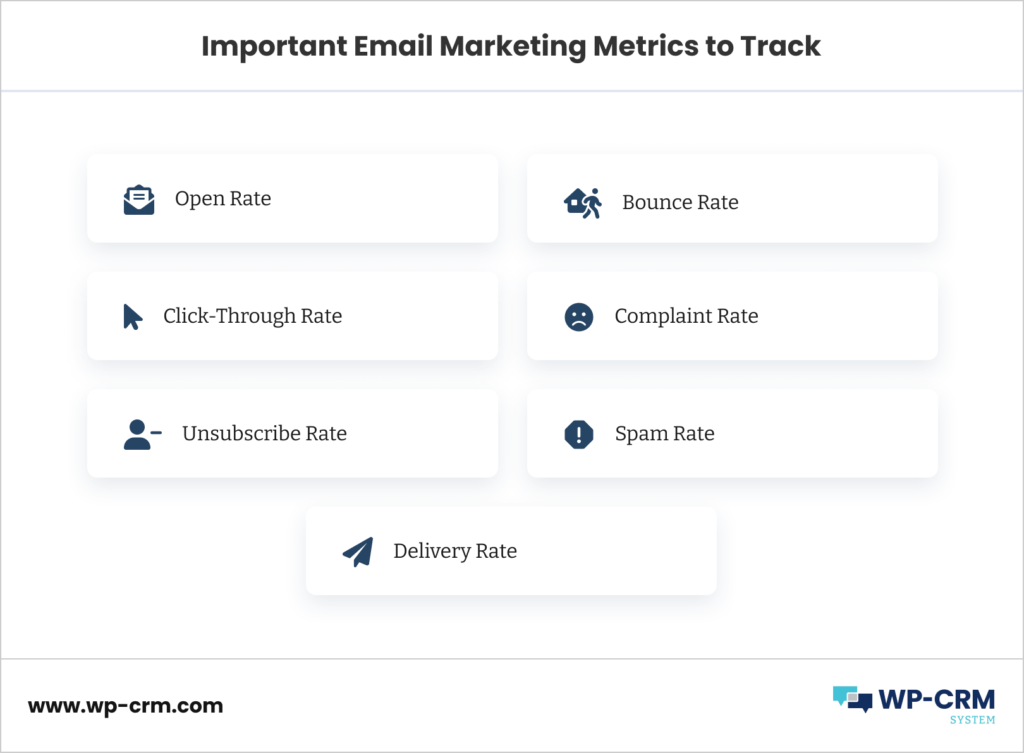Email Marketing Analytics: 8 Metrics to Keep an Eye On
Email marketing is important because it allows businesses to communicate directly with their target audience. By building a list of subscribers, companies can curate better-suited campaigns that promote their products or services.
It’s important to note that email marketing is a cost-effective way to reach a large audience, making it one of the best marketing strategies available. After all, it does not require a great amount of money to get started. Additionally, you can reach out to more prospects quickly and easily with email. This is important for businesses because it allows them to get their brand message across to more potential customers without spending a lot of money.
Despite the benefits email comes with, it is important to test what content types and formats get you the best results. Monitoring email marketing analytics is important because it allows businesses to see what is working and what is not.
By tracking metrics such as open rates, click-through rates, and unsubscribe rates, you can fine-tune your email campaigns to improve results. Additionally, monitoring email marketing analytics can help businesses avoid potential legal problems, such as spam complaints.
What Are Some of the Most Important Email Marketing Metrics to Track?

1. Open Rate
2. Click-Through Rate
3. Unsubscribe Rate
4. Bounce Rate
5. Complaint Rate
6. Spam Rate
7. Delivery Rate
8. Social Shares
Email marketing is a critical part of any business’s digital marketing mix. In fact, 81% of organizations use it as their primary way to acquire new customers. However, with so many different metrics to track, it can be difficult to determine which ones are most important for your business. So, here are 8 KPIs you should explore in detail. We’ll also provide tips on how to track these metrics effectively.
1. Open Rate
The open rate of your emails is a very important metric to monitor because it shows you how many people are actually opening and reading your emails. A low open rate could indicate that your subject lines are not effective or that the content of your emails is not interesting to your audience.
How to improve your open rate?
There are a few things you can do to improve your open rate:
- Use an enticing subject line that will make people want to open your email.
- Keep your subject lines short and to the point.
- Send your emails at the right time. Timing is everything when it comes to email marketing. Make sure you are sending messages when your audience is most likely to be engaged.
- Use personalization. Adding the recipient’s name in the subject line or in the email content can make a big difference.
- Send relevant and targeted content. Your emails should be relevant to your audience and offer something that they are interested in. If you are constantly sending emails that are not relevant, people will eventually stop opening them.
2. Click-Through Rate
The click-through rate (CTR) is the number of people who click on a link in your email divided by the total number of people who received the email. The CTR demonstrates how effective your email content is. A low CTR could indicate that your email content is not relevant to prospects or that the call-to-action is not effective.
How to improve your CTR?
- Make sure your call-to-action is clear and effective.
- Use persuasive language in your call-to-action.
- Offer something of value in your email content.
- Make sure your email content is relevant to your audience.
- Test different call-to-actions to see what works best.
3. Unsubscribe Rate
The unsubscribe rate is the number of people who unsubscribe from your email list divided by the total number of people who received your email. The unsubscribe rate shows you how many people are no longer interested in receiving your emails. A high unsubscribe rate could indicate that your email content is not relevant or that you are sending too many emails.
How to lower your unsubscribe rate?
- Give people the option to choose how often they receive emails from you.
- Don’t send too many emails. You don’t want to bombard people with emails or they will eventually unsubscribe.
- Make it easy for people to unsubscribe. If it’s difficult to unsubscribe, people will get frustrated and may mark your emails as spam.
4. Bounce Rate
The bounce rate is the number of people who receive an error when trying to open your email divided by the total number of people who received the email. The bounce rate is about how many people are not able to receive your emails. A high bounce rate could indicate that there is something wrong with your email list or that your emails are not being delivered.
How to lower your bounce rate?
- Make sure your email list is up to date. Remove any invalid or old email addresses.
- Send your emails from a reputable email service provider.
- Use an email verification service to ensure that your email addresses are valid.
5. Complaint Rate

The complaint rate is the number of people who mark your email as spam divided by the total number of people who received your email. The complaint rate is a good metric to track because it shows how many people think your email is spam. A high complaint rate could result in your emails being blocked or filtered as spam.
How to lower your complaint rate?
- Make sure you are only sending emails to people who have opted in to receive them.
- Do not buy or rent email lists.
- Do not send unsolicited emails.
- Make it easy for people to unsubscribe from your email list.
- Monitor your complaint rate regularly and take action if it starts to increase.
6. Spam Rate
The spam rate is the number of people who mark your email as spam or had spam filters do so divided by the total number of people who received your email. This way you can see how many people believe your email is not relevant to them. A high spam rate could indicate that your email content is not relevant to your audience or that you are using too many marketing keywords in the subject line and copy.
How to lower your spam rate?
- Make sure your email content is relevant and interesting.
- Avoid using too many marketing keywords in your email.
- Monitor your spam rate regularly and take action if it starts to increase.
7. Delivery Rate
The delivery rate is the number of people who receive your email divided by the total number of people who were supposed to receive your email. A high delivery rate means that most of your emails are getting through and a low delivery rate means that some of your emails are being blocked or filtered.
8. Social Shares
The number of social shares is the number of people who share your email on social media divided by the total number of people who received your email. A high number of social shares means that your email is being shared a lot and has gained trust. On the other hand, if your audience doesn’t feel the information included is relevant to them, or that it is simply not a unique solution they would use or recommend, they wouldn’t share your email on their social media.
Final Words
Now that you know which email marketing analytics to track, it’s time to put them into action. Start by pulling reports on these metrics for your past few campaigns. Remember, what gets measured gets improved, so make sure you are regularly tracking your progress. These eight metrics will give you a good overview of how your email list is interacting with your content and where you might need to make some adjustments.
